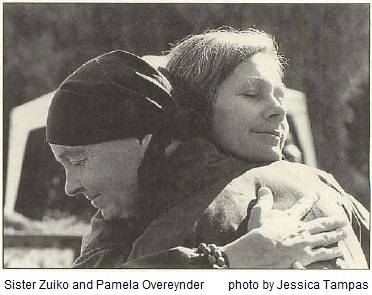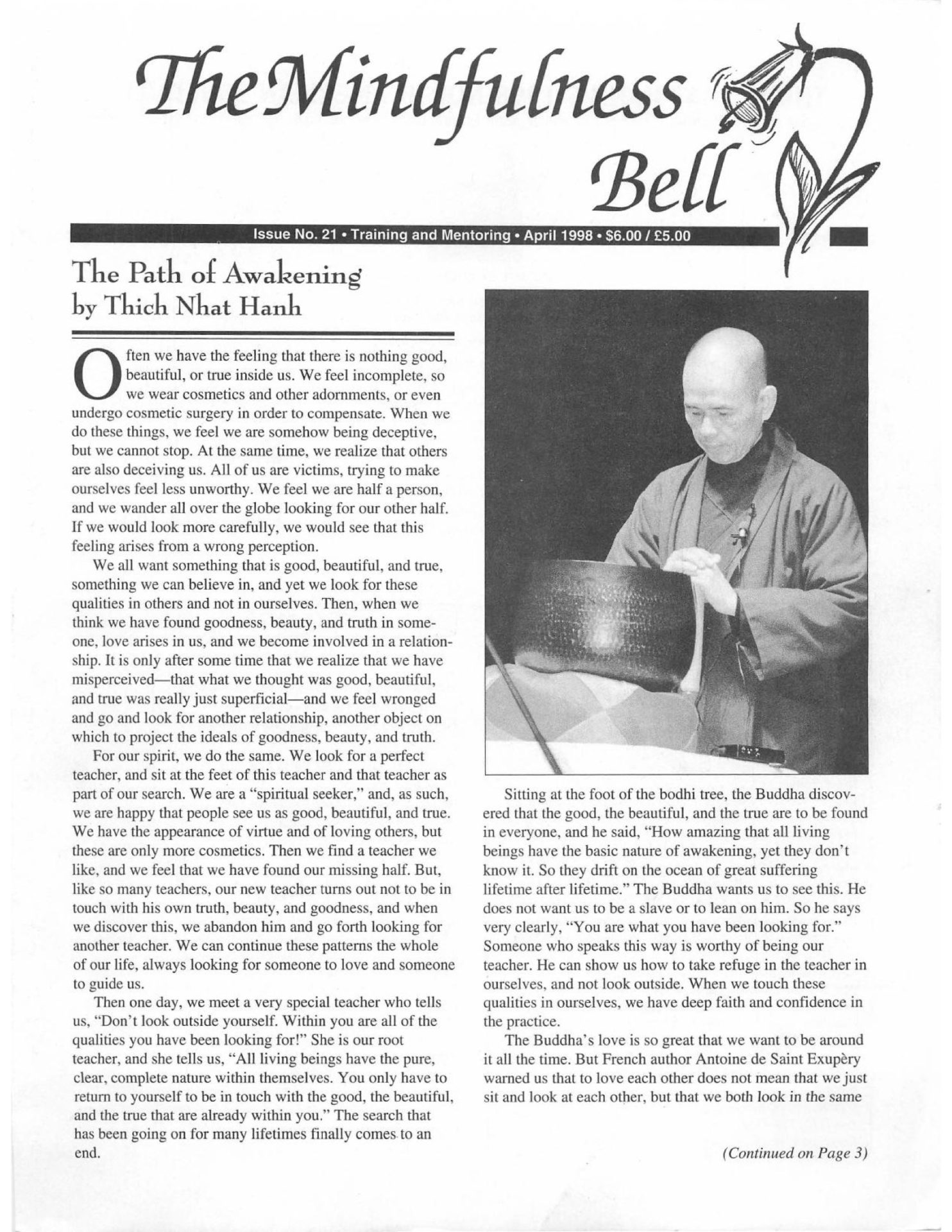By Pamela Overeynder
For several years, I have worked with white people who want to acknowledge their racism. The work grew from my desire to develop deeper relationships with people from other races and cultures. In some areas, I have been successful. However, the spiritual groups I have been involved in have been almost exclusively white.
Several people of color have passed through Plum Blossom Sangha, but most don’t come back.
By Pamela Overeynder
For several years, I have worked with white people who want to acknowledge their racism. The work grew from my desire to develop deeper relationships with people from other races and cultures. In some areas, I have been successful. However, the spiritual groups I have been involved in have been almost exclusively white.
Several people of color have passed through Plum Blossom Sangha, but most don't come back. From friends of color who meditate and follow Thay's teachings, I know that safety and trust issues go very deep. Some of us who are white may believe that because we are "spiritual," we aren't racist, but racism is embedded in us. Denial sets up barriers to ending racism and to safety for everyone as we work to that end.
This past year, Thay has reached out to non-Asian communities of color. At the Santa Barbara retreat, there were two meetings for people of color and friends. Many people spoke bravely and eloquently about their desire to have their experiences of racism validated by the Sangha while choosing not to feel victimized. As a group, we decided to bring up the issue of race in our Dharma discussion groups. That afternoon, I did.
I made the huge assumption that everyone in my group was Euro-American. (Everyone looked white to me.) I asked the group to reflect on why our Sanghas are mostly white, to think about safety issues, and to be willing to continue this deep looking in our home Sanghas. After speaking, I realized I had no right to assume everyone was white. I stopped and asked if anyone identified as a person of color. After a long silence, a woman spoke. Sobbing, she told us that she was Mexican and had not shared her last name out of shame. She described her experiences growing up in a raci st culture. It was humbling for me and deeply touching for us all.
This courageous woman didn't feel safe as a Mexican, even in our small and loving discussion group. She passed for white, because being there was so important and the only way she could feel safe was to pass. Of course, most people of color couldn't pass. This need to camouflage themselves for safety is a common experience for people of color, but largely unknown to white people.
As Sanghas and individuals, we must acknowledge our racist patterns without judgment and with great kindness. We must use the tool of mindfulness to see racism in ourselves and the world around us. Right Understanding leads to Right Action. Through awareness, we can water seeds of unity while celebrating diversity.

Pamela Overeynder, True Sun of Understanding, practices with Plum Blossom Sangha in Austin, Texas and the San Marcos River Sangha in San Marcos, Texas. She is a writer and poet.

